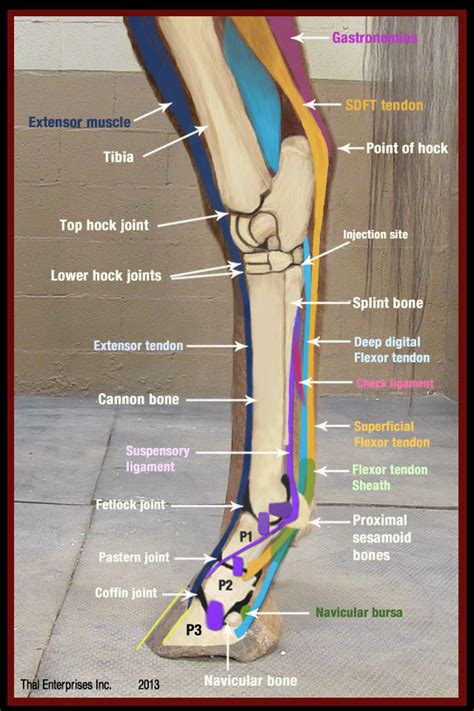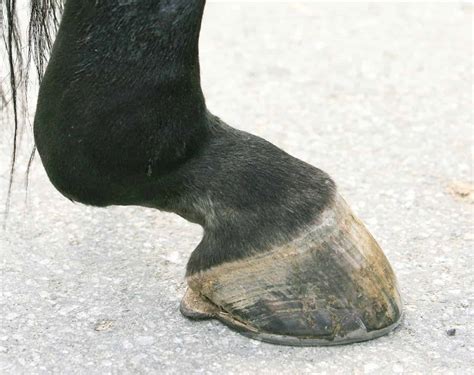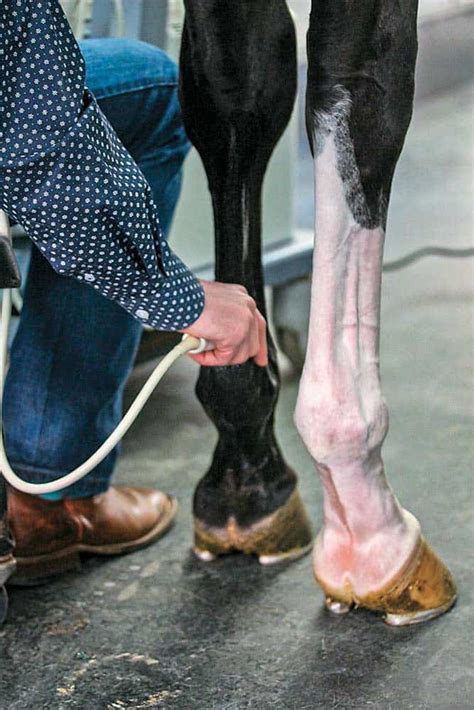Tears, Sprains, and Pulls: Understanding Tendon Equine Leg
Horses, like any other animal, are susceptible to injuries. One of the most common injuries is a tendon injury. Tendons are the connective tissues that attach muscles to bones, and they are essential for movement. When a tendon is injured, it can cause pain, lameness, and even disability.
Tendon injuries in horses can occur for a variety of reasons, including:
- Overuse
- Trauma
- Poor conformation
- Lack of fitness
- Nutritional deficiencies
The symptoms of a tendon injury can vary depending on the severity of the injury. Some horses may experience only mild pain, while others may be completely lame. Common symptoms of a tendon injury include:
- Swelling
- Heat
- Pain
- Lameness
- Stiffness
If you think your horse may have a tendon injury, it is important to seek veterinary attention immediately. Early diagnosis and treatment can help to prevent serious complications.
Treatment for a tendon injury will depend on the severity of the injury. In some cases, simple rest and medication may be all that is needed. In more severe cases, surgery may be necessary.
Tendon injuries can be a serious problem for horses, but they can be managed with proper care and treatment. If you think your horse may have a tendon injury, it is important to seek veterinary attention immediately.
Keep in mind that tendon injuries can be prevented by following good management practices, such as:
- Providing your horse with a balanced diet
- Ensuring your horse is in good physical condition
- Warming up your horse before exercise
- Cooling down your horse after exercise
- Avoiding overexertion
Tendon Equine Leg: Ensuring Your Horse’s Optimal Health and Performance

The equine leg is a remarkable structure, enabling horses to navigate diverse terrains and perform athletic feats. Among the intricate components of the equine leg, tendons play a pivotal role in providing structural support and facilitating movement. Understanding the anatomy, functions, and potential injuries associated with tendons in equine legs is essential for ensuring your horse’s well-being and athletic prowess.
Anatomy of Tendons in Equine Legs
Tendons are robust, fibrous cords that connect muscles to bones. In equine legs, tendons are primarily located in the lower limbs, extending from the muscles of the hip and thigh to the bones of the lower leg and foot. These resilient structures transmit the forces generated by muscle contractions, enabling movement and locomotion.
Functions of Tendons in Equine Legs
The primary function of tendons in equine legs is to transmit the forces generated by muscle contractions to the bones, allowing for efficient movement. Additionally, tendons:
- Provide structural support: Tendons stabilize the joints and maintain proper alignment of the bones, preventing excessive movement and potential injury.
- Absorb shock: Tendons act as shock absorbers, dissipating the impact forces experienced during movement and protecting the joints and bones from excessive stress.
- Store and release energy: Tendons have elastic properties, allowing them to store energy during muscle contraction and release it during muscle relaxation, contributing to efficient movement and locomotion.
Common Tendon Injuries in Equine Legs

Despite their inherent strength and resilience, tendons in equine legs are susceptible to injuries, particularly in athletic horses. Common tendon injuries include:
- Tendonitis: Inflammation of the tendon, often caused by overuse, improper training, or conformational issues.
- Tendon rupture: Complete or partial tearing of the tendon, typically resulting from sudden and forceful stress or a chronic degenerative process.
- Tendon strain: Overstretching or tearing of the tendon fibers, often due to excessive force or repetitive stress.
Signs and Symptoms of Tendon Injuries in Equine Legs

Recognizing the signs and symptoms of tendon injuries is crucial for early intervention and treatment. Common indicators include:
- Lameness: Abnormal gait or reluctance to bear weight on the affected leg.
- Swelling: Enlargement and inflammation around the affected tendon.
- Pain: The horse may exhibit discomfort or sensitivity when the injured area is touched or manipulated.
- Heat: The affected area may feel warm to the touch due to inflammation.
Treatment and Prevention of Tendon Injuries in Equine Legs

Treatment for tendon injuries in equine legs varies depending on the severity and nature of the injury. Common treatment modalities include:
- Rest: Strict rest and confinement to allow the tendon to heal and regenerate.
- Cold therapy: Application of cold packs or ice to reduce inflammation and pain.
- Medication: Administration of anti-inflammatory drugs to alleviate pain and swelling.
- Supportive bandaging: Application of bandages or wraps to provide support and stability to the affected tendon.
- Surgery: In severe cases, surgical intervention may be necessary to repair a torn or ruptured tendon.
Prevention of tendon injuries in equine legs focuses on proper training techniques, gradual conditioning, and maintaining a healthy weight. Additionally:
- Regular exercise: Consistent exercise helps strengthen tendons and prepare them for the demands of athletic performance.
- Proper warm-up and cool-down: Warming up before exercise and cooling down afterward helps prevent sudden strain on tendons.
- Adequate nutrition: Ensuring a balanced diet with appropriate levels of nutrients supports tendon health and resilience.
- Regular hoof care: Proper hoof care promotes correct foot conformation and reduces the risk of tendon injuries.
Tendon injuries are prevalent in equine athletes, impacting their performance and overall well-being. Understanding the anatomy and functions of tendons, recognizing the signs of tendon injuries, and implementing preventive measures are essential for maintaining tendon health and ensuring the longevity of your horse’s athletic career.